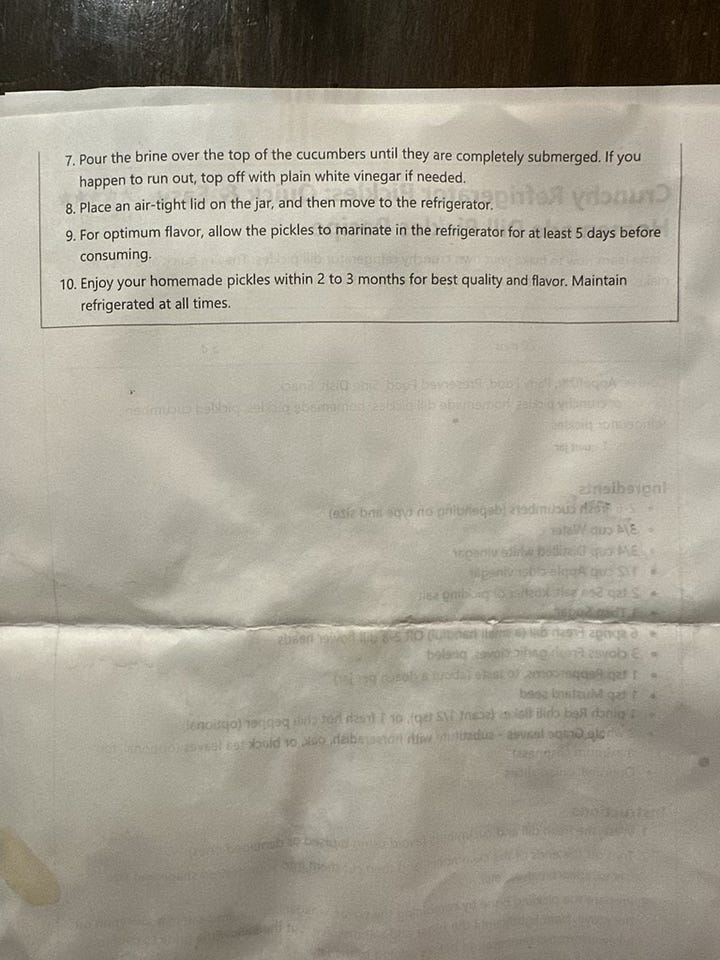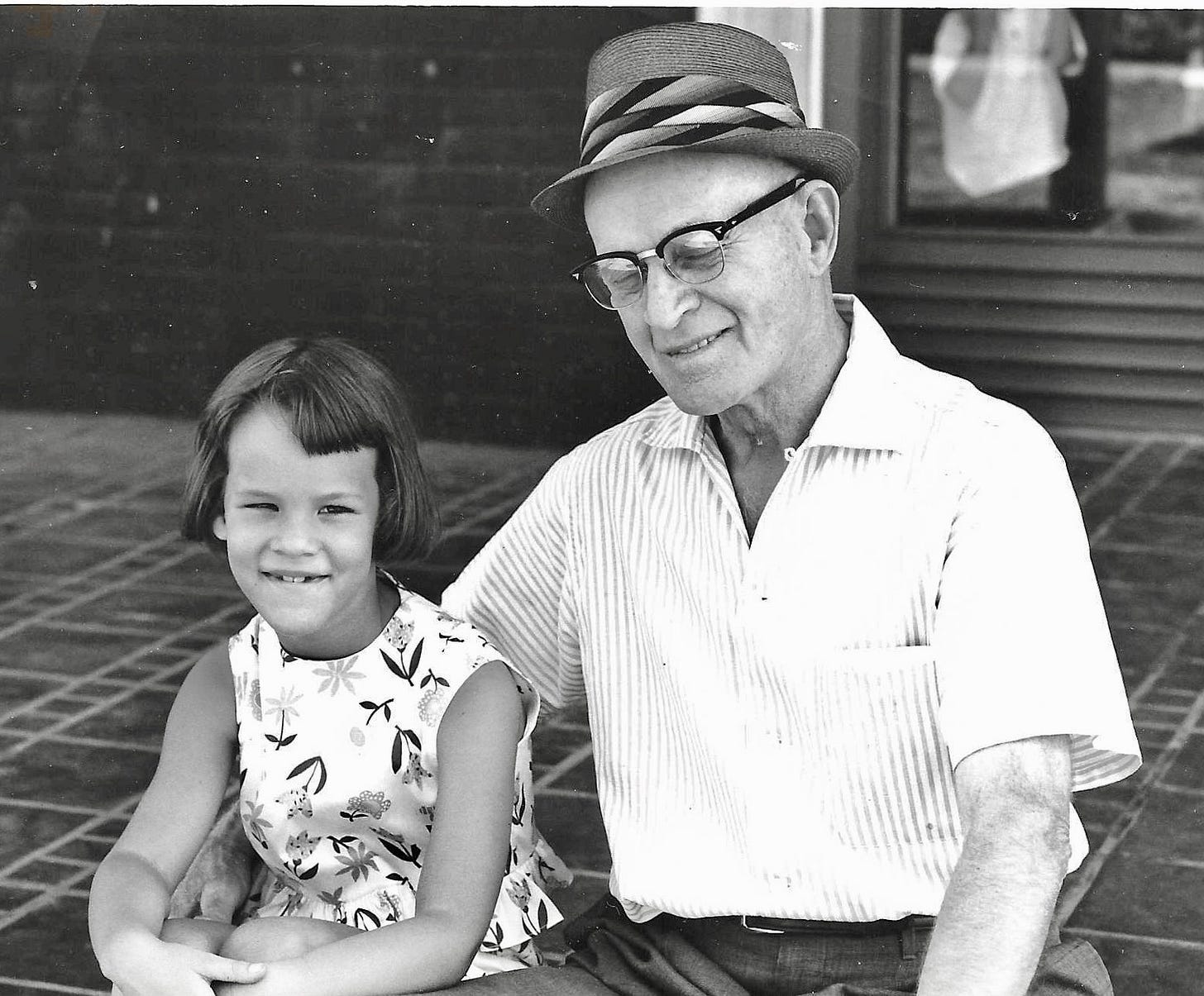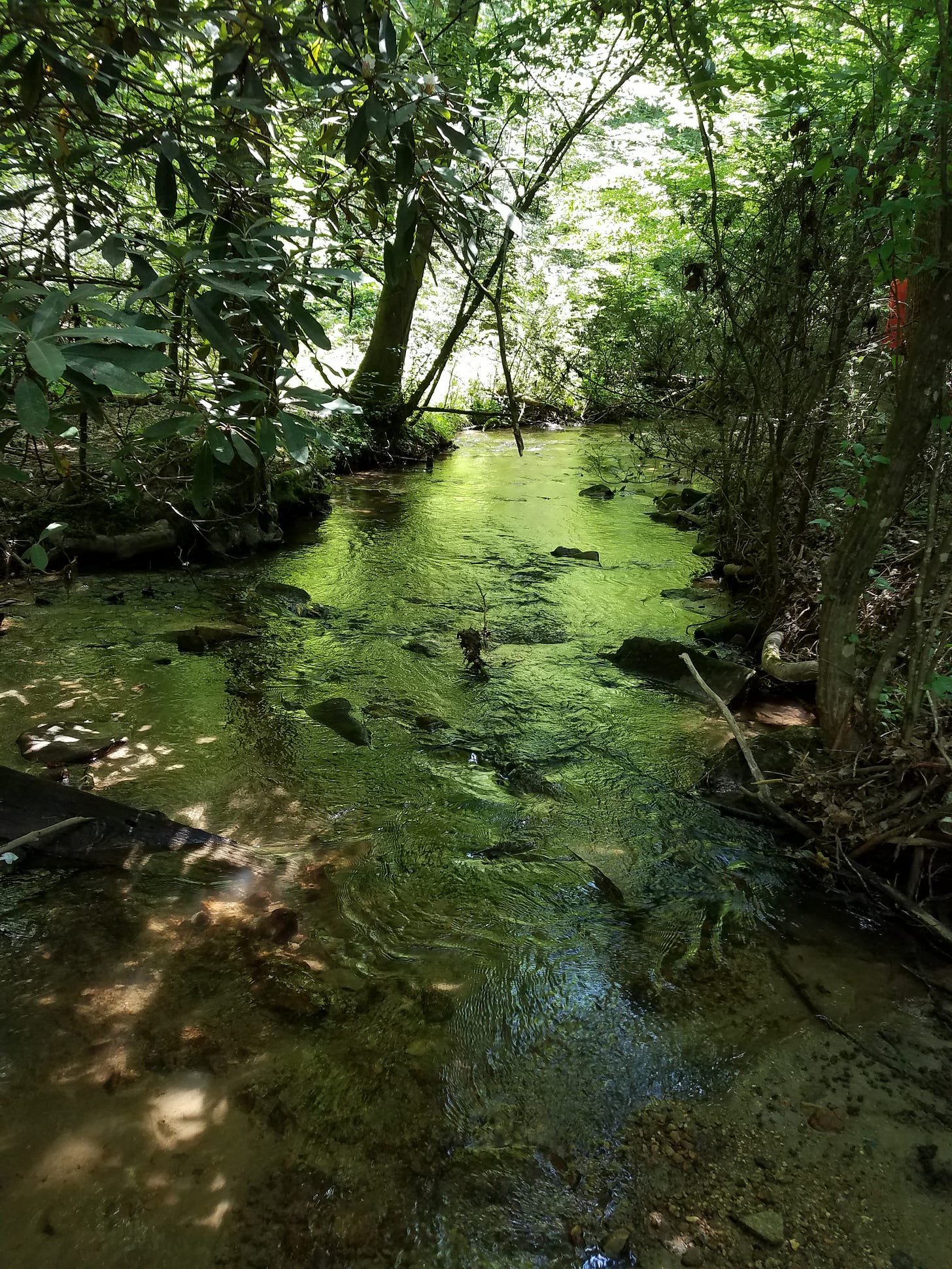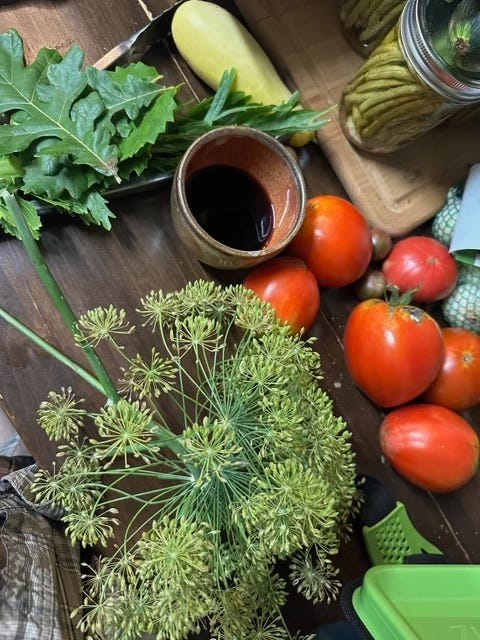My grandfather was a special human being. His name was Henry, but we grandkids called him “Bapa”—pronounced BAH-puh.
(I know, most grandfathers are special. I hope you had a special one, too.)
Bapa taught me slowness. By the time I knew him, really knew him, he was in his seventies. His movements were calm and deliberate, his voice soft. Bapa had made his living as a druggist. He worked long hours at his pharmacy—one of the old-timey ones, with a soda fountain.
Bapa’s true joy, though, was in the outdoors. When we went to visit my grandparents each year in South Dakota, he took my brothers pheasant hunting and ice fishing.
I was much younger, and I was a girl. So Bapa taught me other things. How to “snap” the blossoms of the snapdragons that grew in my grandmother’s flower garden. And to hear the coo of the mourning doves who nested in their yard.
My most vivid memory of Bapa is when we’d sit on the front steps and feed squirrels. He always had a handful of nuts (I wish I could remember what kind) and he’d show me how to lay them out in a line along the sidewalk in front of us. Then we’d settle down on the steps and wait.
You have to be still, Bapa told me. And we need to stay quiet so the squirrels won’t be afraid to come close.
He was my first meditation teacher.
That feels like ages ago. The world was slower then.
Now we live in a world that’s moving so fast, we struggle to keep up. We are pinned by gravity to a globe that’s spinning at 1,000 miles per hour. We don’t physically feel that speed, but more and more we’re trying to emulate it.
Within seconds of a certain shooting that happened last week (I won’t name names), our digital screens were blowing up. Words … photos … video … commentary. It was big news, and it was coming at us fast. Faster than our poor overloaded brains could register. It took a minute to comprehend.
It took a minute. Yes. We need a minute. Crazy spinning world, please give us a minute or two.
We could take a hint from the other-than-human world. Some things in nature do grow quickly (weeds!). But think of trees. It takes years, decades, for most species to reach their mature height. There’s no need to hurry. They take their sweet time. Think of how slowly moss or lichens creep across a patch of ground. And think how water flows, at least in natural settings. It follows its own speed.
Practicing nature therapy helps me and my clients decelerate. When we go into the woods for a walking session, everything seems to slow. Our steps. Our thoughts. Our words. I can feel my clients’ overwrought nervous systems uncoiling.
I channel Bapa.
The gift of aging: slowness
As I age, I notice myself slowing down—mostly by choice. I’m not in such a big hurry anymore. The so-called “Slow” movement appeals to me. Slow food. Slow medicine. Slow fashion.
I want to be more mindful, more intentional about every action, every word, every breath. The practice of mindfulness—that, and my memories of Bapa—helps me remember how to be a human moving at a sane speed.
My husband is retired now, and I work only part-time. On the mornings that I don’t have a day of work ahead of me, we wake slowly, luxuriously. The sun slides in our bedroom window and nudges our eyes open. We stir and stretch, say good morning, roll over and look at each other. It’s sweet. It’s slow.
I know it’s different for younger people, and people who work every day. I’ve certainly been there, up until recently. When that alarm goes off, we have to jump out of bed. The world is revving its engine. Already ramping up to full speed. Spinning at 1,000 miles an hour.
But young people can practice slowness, too
The other day I listened to a Zoom class offered by a lovely young woman. Like me, she lost an eye in an accident and she is building a whole online business around sharing what she learned through her healing process. She’s incredibly positive. Her optimism and energy pours out of her like a waterfall.
(By the way, if you’re a paid subscriber to my online memoir, you’ll meet Shelby at the next webinar in my book package, on July 30th. I’m fascinated by her youthful vibrance, her eagerness to put good out into the world.)
In that class, Shelby said something that stuck with me. She was talking about what happens when a person is really “in their lane”—when you’ve found your calling and you’re manifesting your dreams and moving forward into your life, as she is. When you get to that point, Shelby said, you actually slow down.
Yes! She used the words slow down. You stop doing so many things, stop trying to prove something. The frenetic push eases. You dial it down to the one thing you’re called to do and you focus your energy and your time on that one precious thing. Life gets simpler, and—strangely—slower.
A slow walk around the yard
One evening earlier this week, as the sun was sinking, Jon came over to visit. Jon is also young, in the bloom of youth. He’s a landscape designer who builds beautiful gardens using native plants. He is helping us create a native meadow of grasses and wildflowers in our landscape. He spent months collecting seed from various wildscapes within 20 miles of us. Seeds from species that are hyperlocal and super-native.
Back in December, Jon and our friend Cory (also young, also vibrant) planted dozens of plants Jon had nurtured from those seed-collecting trips. The project is still in its infancy. We know we need to be patient as the meadow comes into its own—slooowly. But already color is popping and pollinators are arriving. Can you see that tiny moth on the liatris flower spike?
(I bet you’re curious, my Rx Nature friends. So yes, I’ll be writing more about this project in a future post. Stay tuned!)
Anyway, Jon hadn’t seen the meadow in awhile. He wanted to come over and check out how it’s doing in its first summer. We wandered around the yard and I asked Jon lots of questions. I always seize the opportunity to pick his brain. He knows a few thousand things about native plants. And he’s totally generous with ideas and suggestions.
“Do you have another minute?” I kept saying. “Can I ask you one more question?”
“Sure!” was Jon’s answer. He had the time. We were practicing slowness.
Jon noticed the dill in my herb garden. It’s in its summer glory right now, throwing up lacy seedheads on tall stalks. Chartreuse umbrellas that wave in the wind.
“Mind if I take a few of those?” he asked. “I’m going to make refrigerator pickles.”
Refrigerator dill pickles! Now there’s an example of Slow Food. I asked Jon if he’d teach me how to do that. Later, after he got home, he sent me this:
Notice how Jon took the time to arrange the elements in this photo? It’s more than a quick text. It’s a still-life. Carefully curated, lovingly shared.
And since I know you’re wanting it … Jon also shared the recipe for how he makes refrigerator pickles. As you’ll see, it’s a slow process. The cucumbers need time—at least five days! most of a week!—to turn into pickles.
We all need time. We need the world to slow down.











You'd think that the older a person gets, the slower their lives would become. But time continues to fly by.
This was such a beautiful reflection on slowness. I am finding myself being forced to become slower because of circumstances beyond my control, and I am grateful for having room to breathe after so many years of chasing my own tail!